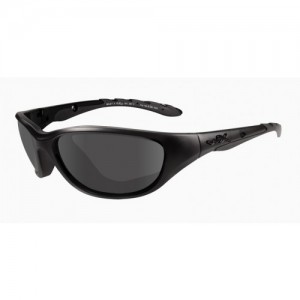Choosing Wiley X Glasses and Coatings for Motorcycle Riding in Poor Visibility Conditions
Glasses for motorcycles protect the eyes from grit, road debris, wind, intense sunlight, and ultraviolet. These are the usual practical reasons people buy this type of eyewear. While the above reasons enhance safety, quality eyewear such as Wiley X glasses for motorcycle riding offer additional features that improve safety in other ways. These features improve your ability to see in low visibility conditions.
Poor visibility caused by weather and the time of day is responsible for many catastrophic accidents. Although this is true for the drivers of all motor vehicles, motorcyclists have more to lose in these accidents. They don’t have the bumpers, airbags, and steel cages of cars. Even accidents with minor consequences for motorists are potentially fatal for motorcyclists.
This is why bikers should take advantage of any edge they can get that will prevent accidents from happening in the first place. Accident prevention starts with good vision, especially in poor visibility conditions. Here are four of them:
Fog
Fog has caused many traffic pileups. The reason for this has to do with poor visibility and the way that people drive. People don’t allow enough following distance. They also drive too fast and blindly follow the tail lights of the vehicle ahead. In addition to not making these mistakes, you should take advantage of motorcycle riding glasses with fog penetrating lens tints. These tints are copper, yellow, amber, orange, and brown. The most popular of these for dealing with fog is yellow.
Those who are technically minded are probably wondering why a lens tint such as yellow would help your vision in fog. The reason is that yellow tint blocks out blue light. Blue light is easily scattered. This scattering also occurs within the eyes, with the result that blue light focuses in front of the retina rather than exactly on it. This causes an external blue light bulb viewed at night for example, to appear slightly blurred with a blue glare around it. Glare of any kind reduces contrast. This effect is especially noticeable in fog and even falling snow. Removing blue light eliminates this glare and therefore improves contrast, which then enhances depth perception.
A side benefit of using a yellow lens tint is that it reduces eye fatigue. The reason is that you aren’t straining your eyes as hard to see details in the fog.
Fogging
Fogging of your riding glasses is a problem when riding slowly or when stopped. It is caused by condensation. The air space between your face and your riding glasses can get humid from the heat and moisture of your skin. In cold weather, the lens surface also gets cold. The water vapor in the humid air behind your glasses then condenses into tiny water droplets on the cold lens. These droplets are the fogging that obstructs your view.
Sometimes you can get a double whammy effect, that is, when your glasses fog up in foggy weather. The moisture content of fog is already high to begin with and has little capacity to absorb any extra moisture from your skin. This makes your glasses even more likely to fog up.
Whenever you expect fogging to be a problem, apply an anti-fog coating to the inside of your motorcycle riding glasses. Anti-fog coatings contain ingredients that prevent condensed moisture from beading up into droplets large enough to be seen. It is visible droplets that produce the lens fog. With an anti-fog coating, the condensed moisture is still there but remains invisible, and therefore doesn’t obstruct your vision.
Glare
Glare washes out the detail of the road and traffic scene ahead of you. Brake lights are difficult to see, and your perception of slowing traffic in front of you is also compromised. You can’t see road signs or traffic lights. Extreme glare can even prevent your seeing a big semi rig with a flatbed trailer pulling out in front of you. Glare is the cause of many serious traffic accidents.
Glare occurs when sunlight reflects off surfaces into your eyes. It also happens when sunlight is distorted after passing through a dirty or scratched windshield. Eliminating this second cause of glare will require cleaning or replacing the windshield or visor. Dark tinted motorcycle riding glasses will reduce glare from reflecting surfaces such as the windows of cars and buildings, puddles, or wet road surfaces. Polarized lenses however, are especially effective at eliminating this type of glare.
A word of caution about polarized lenses: They may distort some types of LED displays. In addition, polarized lenses can cause distortions when looking through scratched windshields or visors.
Nighttime
While your headlights and the lights of other vehicles provide enough light to make night motorcycling possible, nighttime is a far more dangerous time for riding than the day. Although some people recommend yellow tinted glasses for nighttime use, yellow tint only makes things seem brighter. In truth, they allow less light to reach your eyes. Tint of any color blocks light, which is in short supply at night. Always use clear motorcycle riding glasses after the sun sets.
Is there anything else you can do to enhance night vision? Yes. An anti-reflective (AR) lens coating will prevent glare caused by light reflections within each lens. It will also prevent light reflections off the inside surface of your glasses. Lens reflections are caused by the headlights of oncoming traffic and traffic that’s following and passing you.
Increase your riding safety in poor visibility conditions by using the right tints and coatings with your Wiley X motorcycle riding glasses.



Leave a Reply